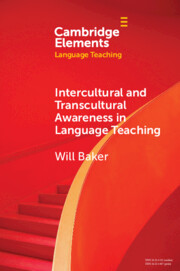Element contents
Intercultural and Transcultural Awareness in Language Teaching
Published online by Cambridge University Press: 10 March 2022
Summary
Keywords
- Type
- Element
- Information
- Series: Elements in Language TeachingOnline ISBN: 9781108874120Publisher: Cambridge University PressPrint publication: 07 April 2022



